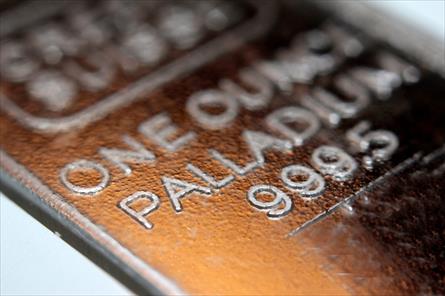The Rarity of Palladium in Jewelry: An In-Depth Exploration
Palladium, a lustrous silver-white metal belonging to the platinum group, is renowned for its rarity and industrial importance. However, unlike gold or platinum, palladium isn’t a staple in the jewelry industry. Despite its attractive qualities, various factors have limited its use in crafting fine jewelry. Below, the precious metals experts from First National Bullion, Scottsdale collectors’ top choice for outstanding quality and service, discuss why palladium hasn’t gained widespread popularity in jewelry making, examining its properties, market factors, and practical considerations.
The Allure of Palladium
Palladium was discovered in 1803 by William Hyde Wollaston and quickly gained recognition for its unique properties. As one of the platinum group metals (PGMs), palladium shares many desirable traits with platinum, such as resistance to tarnish and corrosion, making it an attractive candidate for jewelry. Its naturally white sheen means it doesn’t require rhodium plating, unlike white gold, which is a notable advantage.
Moreover, palladium is hypoallergenic, an essential consideration for many jewelry wearers with sensitive skin. Its light weight compared to platinum also offers comfort for everyday wear. Despite these appealing characteristics, palladium remains a relatively rare choice for jewelry.
Historical Context & Market Trends
Historically, the popularity of different metals in jewelry has fluctuated with economic trends, cultural shifts, and market demands. Gold has long been a symbol of wealth and status, while platinum has been favored for its durability and prestige. Palladium saw a brief surge in popularity during World War II, when platinum was reserved for military use, and palladium became a substitute in jewelry. However, its popularity waned after the war as platinum reasserted its dominance.
In the early 2000s, palladium experienced a resurgence, partly due to the rising cost of platinum, but this renewed interest was short-lived. The fluctuating market value and the emergence of alternative metals like titanium and tungsten further complicated palladium’s position in the jewelry market.
Price Volatility & Market Dynamics
One of the main reasons palladium isn’t commonly used in jewelry is its price volatility. The palladium market is subject to significant fluctuations due to its reliance on industrial demand, particularly from the automotive sector. This volatility makes it challenging for jewelers to price palladium jewelry competitively and consistently.
Furthermore, the cost of palladium has surged in recent years, sometimes even surpassing that of platinum. This increase in price diminishes the economic incentive for jewelers to work with palladium, especially when other metals like platinum and white gold offer similar aesthetic qualities without the associated market instability.
Consumer Awareness & Demand
Another factor influencing the use of palladium in jewelry is consumer awareness and demand. Palladium is less known among consumers compared to gold, platinum, and silver. This lack of awareness results in lower consumer demand for palladium jewelry, creating a cycle in which jewelers are less inclined to offer palladium pieces, further reducing its visibility in the market.
Marketing efforts for palladium jewelry have also been limited. Without significant promotion and consumer education, the potential market for palladium jewelry remains untapped. Consumers tend to gravitate toward metals they’re familiar with, which are often perceived as more prestigious and valuable due to their historical and cultural significance.
Technical Challenges in Jewelry Making
One of the significant barriers to palladium’s widespread use in jewelry is the technical challenge it presents to jewelers. Working with palladium requires specialized skills and tools that are distinct from those used for gold or platinum. It has a higher melting point than gold and silver, demanding more sophisticated equipment and techniques.
Palladium also presents difficulties in casting, soldering, and setting stones. It has a tendency to absorb gasses during casting, which can lead to porosity issues and weaken the final product. Jewelers must use vacuum casting and other advanced methods to avoid these problems, making the production process more complex and costly.
Additionally, palladium’s hardness, while contributing to its durability, also makes it challenging to shape and polish. These technical challenges discourage many jewelers from working with palladium, especially when other metals offer easier handling.
Alternatives to Palladium
For those interested in the characteristics of palladium but wary of its challenges, there are several alternatives. Platinum offers a similar look and hypoallergenic properties, while white gold provides a comparable aesthetic with greater design flexibility and lower costs. These alternatives have well-established markets, more stable pricing, and fewer crafting challenges, making them more attractive options for both jewelers and consumers.
While palladium has many desirable qualities that could make it an attractive choice for jewelry, several factors contribute to its limited use in the industry. Price volatility, crafting challenges, limited design flexibility, and low consumer awareness all play a role in keeping palladium from becoming a mainstream metal in jewelry. As the market and consumer preferences evolve, it remains to be seen whether palladium will find a more prominent place in jewelry design. For now, it remains a niche option overshadowed by the more familiar and versatile choices of gold, platinum, and silver.
Whether they’re veteran palladium collectors or new investors looking to buy silver bullion, Scottsdale residents should reach out to the experts at First National Bullion. We offer a huge selection of palladium, gold, platinum, and silver items. Scottsdale collectors who are looking for the finest-quality coins, bars, and bullion should give us a call to speak with one of our precious metals experts.
The statements made in this blog are opinions, and past performance is not indicative of future returns. Precious metals, like all investments, carry risk. Precious metals and coins may appreciate, depreciate, or stay the same in cash value depending on a variety of factors. First National Bullion does not guarantee, and its website and employees make no representation, that any metals for sale will appreciate sufficiently to earn the customers a profit. The decision to buy, sell, or borrow precious metals and which precious metals to purchase, borrow, or sell are made at the customer’s sole discretion.


